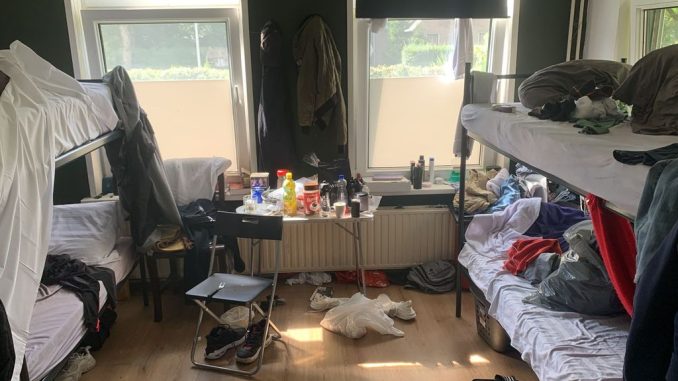
Introduction
Municipalities still keep 5,000 sleeping places in emergency shelters available for asylum seekers, while that shelter is actually the responsibility of the government. It is the work of COA, the Central Agency for the Reception of Asylum Seekers.
The Plan for Emergency Shelters
At the beginning of the summer last year, the State, in the person of State Secretary Van der Burg, temporarily asked the municipalities for help in arranging 11,000 extra reception places, after hundreds of migrants had had to sleep in the open air at the application center in Ter Apel. The 25 mayors of the Security Council soon agreed with Van der Burg that these emergency places were only intended for a short time, because they often do not meet the basic requirements.
The Lack of Permanent Reception Locations
The plan was that the COA would take over the locations of the municipalities and would adjust, but that often turns out not to be possible. The deadline for the takeover kept getting pushed back. It now appears that of the 72 emergency locations that were managed by municipalities, only 16 are suitable for conversion into permanent reception locations. That’s not even a quarter.
Emergency Locations and Shelters
In the past year, following an urgent request from the cabinet, municipalities had realized 72 emergency reception locations at a certain point in time. A number of them, mostly congress halls and sports halls, have since been closed because they were not suitable for longer reception.
Seven locations have been taken over by the COA, as intended, and nine locations are still in the acquisition process. Talks are still ongoing at three locations.
The rest of the approximately 5,000 sleeping places will remain under the management of municipalities, according to figures requested by the NOS from COA. According to the COA, a number of municipalities prefer to keep crisis emergency shelter under their own management. They now fall under the Temporary Municipal Shelter (TGO) scheme. Some of them will still close in the coming months.
In addition to these 5000 TGO places, there are also more than 1000 places in hotels and places to stay at people’s homes for status holders; those reception places also do not fall under the capacity of the COA.
The Need for Permanent Locations
A permanent location not only requires good sleeping places, but also facilities such as care and education. Because there are still more asylum seekers than reception places, municipalities are forced to keep open locations that do not meet the requirements. They do not want to close it, because then the asylum seekers have nowhere else to go.
Major Lack of Privacy
The emergency places in municipalities have been set up in a short time in locations such as gymnasiums and conference halls. People sleep there in bunk beds in large spaces, separated by a thin wall or curtain, for example. Kitchen and bathroom often have to be shared with dozens of others. There is a great lack of privacy.
The quality of the reception is far below par at some crisis emergency reception locations, the right and multiple inspections al. For example, the safety of children was at stake and there were health risks. For asylum seekers at the emergency locations, this situation has been going on for a year now, which is mentally tough for many.
The Implications of National Politics
“It is very disappointing that municipalities and COA are now standing in the mud and trying to make something of it, but are being abandoned by national politics,” says Martijn van der Linden of Refugee Work in the NOS Radio 1 Journaal. Due to the fall of the cabinet, no new decisions are being taken and it is unclear what will happen with the dispersion law, which must oblige municipalities to take in a number of asylum seekers; not all municipalities do that.
According to the Council for Refugees, it does not really matter who arranges the reception. “Permanent locations are needed,” emphasizes Van der Linden. However, the quality differs greatly per location, sees Refugee Work. “At some locations, including municipal locations, things are going quite well. Activities are organized there and residents feel heard.”

Be the first to comment